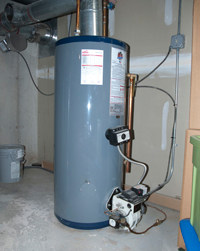Ensuring Longevity of Your Home's Hot Water System: Maintenance TipsTop Methods to Care for Your Home's Hot Water System Effectively
Ensuring Longevity of Your Home's Hot Water System: Maintenance TipsTop Methods to Care for Your Home's Hot Water System Effectively
Blog Article
The content listed below on the subject of How to Maintain a Hot Water Heater in a Few Simple Steps is immensely informative. Don't bypass it.

Warm water is important for day-to-day convenience, whether it's for a refreshing shower or cleaning recipes. To ensure your hot water system runs successfully and lasts longer, routine upkeep is vital. This article offers functional ideas and insights on exactly how to maintain your home's warm water system to avoid interruptions and pricey repair work.
Intro
Keeping your home's hot water system may appear complicated, but with a few simple steps, you can guarantee it runs efficiently for years to find. This guide covers every little thing from recognizing your warm water system to DIY maintenance ideas and recognizing when to hire professional help.
Significance of Maintaining Your Hot Water System
Routine upkeep not only prolongs the life-span of your hot water system however additionally ensures it operates successfully. Neglecting maintenance can result in decreased efficiency, higher energy bills, and even premature failure of the system.
Indications Your Hot Water System Requirements Upkeep
Understanding when your hot water system needs interest can stop significant concerns. Keep an eye out for indications such as irregular water temperature level, weird noises from the heater, or rustic water.
Recognizing Your Warm Water System
Prior to diving right into upkeep jobs, it's handy to recognize the standard parts of your warm water system. Normally, this includes the water heater itself, pipelines, anode poles, and temperature level controls.
Monthly Maintenance Tasks
Regular regular monthly checks can assist capture small problems before they escalate.
Flushing the Hot Water Heater
Purging your hot water heater eliminates sediment buildup, improving performance and lengthening its life.
Monitoring and Replacing Anode Rods
Anode rods prevent deterioration inside the container. Checking and replacing them when worn out is crucial.
Evaluating and Readjusting Temperature Settings
Adjusting the temperature level setups guarantees optimal efficiency and security.
DIY Tips for Maintenance
You can execute a number of maintenance jobs on your own to keep your warm water system in leading condition.
Checking for Leakages
Frequently inspect pipelines and connections for leaks, as these can bring about water damage and higher costs.
Checking Pressure Alleviation Valves
Evaluating the stress safety valve ensures it operates properly and prevents too much pressure build-up.
Protecting Pipes
Shielding hot water pipelines decreases warmth loss and can conserve power.
When to Call an Expert
While do it yourself upkeep is advantageous, some concerns require expert proficiency.
Complicated Issues Needing Professional Assistance
Examples consist of major leaks, electric issues, or if your hot water heater is regularly underperforming.
Regular Professional Upkeep Benefits
Specialist maintenance can include complete evaluations, tune-ups, and ensuring compliance with safety and security requirements.
Conclusion
Normal maintenance of your home's warm water system is necessary for efficiency, long life, and expense financial savings. By complying with these tips and understanding when to seek expert help, you can guarantee a trusted supply of hot water without unforeseen interruptions.
Water Heater Maintenance Tips
Test the TPR Valve
Shut off the power and the cold-water supply valve. Place a bucket under the pipe connected to the temperature-pressure-release (TPR) valve on the top or side of the tank. (This valve opens if the tank pressure gets too high.) Lift the valve’s tab to let some water out, then let go. If water keeps flowing, drain the tank partway, unscrew the old valve with a pipe wrench, and install a new one. Check the Anode Rod
Put a hose to the tank’s drain cock and let out a few gallons of water. Now fit a 1 1/16-inch socket onto the rod’s hex head on top of the heater (or under its top plate) and unscrew the rod. If it’s less than ½ inch thick or coated with calcium, buy a new one, wrap its threads with Teflon tape, put it back in the tank, and tighten securely. Use this segmented rod if headroom above the tank is limited. Drain the Tank and Wash Out Sediment
Drain the remaining water in the tank into the bucket, then stir up the sediment on the tank’s bottom by briefly opening the cold-water supply valve. Drain and repeat until clean water comes out of the hose. Close the drain cock, refill the tank, and turn its power back on. Adjust the Temperature
Find the temperature dial on the side of the tank and unscrew its cover. Adjust the dial to 120 degrees using a flathead screwdriver. For every 10 degrees the temperature is lowered, you can expect to save up to 5 percent in energy costs. Turn the water heater off or the thermostat down to its lowest setting if you plan to be away from home for more than three days. Insulate the Pipes
Buy some self-sticking 3/8-inch-thick foam pipe insulation that matches the pipes’ diameter. Slide the foam over the hot-and cold-water pipes as far as you can reach. Insulating the cold-water pipe prevents condensation in summer. Peel the tape and squeeze the insulation closed. If the pipe is 6 inches or less from the flue, cover it with 1-inch-thick unfaced fiberglass pipe wrap. https://www.thisoldhouse.com/plumbing/21016402/how-to-maintain-a-water-heater

Hopefully you enjoyed reading our topic on Tips For Maintaining Your Hot Water Heater. Thanks a ton for taking a few minutes to read through our piece. For those who appreciated our blog entry if you please remember to pass it around. We appreciate reading our article about Tips on Maintaining a Water Heater.
Book My Estimate Report this page